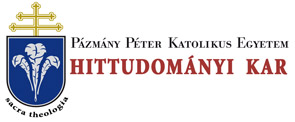Folia Theologica et Canonica, Supplementum (2016)
Szabolcs Anzelm Szijromi, O.Praem., Relationship among the Holy See, Czech-, Polish-and Hungarian Kingdoms in the 13"'-14" century
RELATIONSHIP AMONG THE HOLY SEE, CZECH-, POLISH- AND HUNGARIAN KINGDOMS 201 Court’s conception. It is quite clear from that early - in the time of Pope Gregory VII (1073-1085) - approach which recognized both countries as territories offered to protection of St. Peter." However, this concept is also approved by the Papal legates’ mandates which consequently were given to the both territories (e.g., Philipp de Fermo’s instructions at the National Council of Buda in 1279, not only for Hungary, but for Poland too).12 We can see the same idea concerning the Papal intervention on ecclesiastical administration of justice and judicial organization, which sometimes had been regulated by only one regulation for the entire region.''1 Moreover, the same commissars had received mandate to collect the Papal tenth in the territory of Poland like in Hungary and Slavonia after the Council of Lyon II.14 The record-books of Papal rate-collectors show well, that Europe was distributed into regions for collection of tenth.15 I. Contemporary Problems "The Czech. Hungarian, and Polish Kingdoms had adopted the Christian customs through a difficult way. The best approval for this process the martyrdom of numerous rulers and bishops.” as was explained by Card. Józef Glemp (t2013) in 1994 when he described the ecclesiastical establishment of Gniez- no-Province.16 It is well known that in the conversion of the Hungarian nation played an extraordinary important role the strong influence of the Polish " Coll. Deusdedit, III. 199, 274—275: Wolf von Glanvell, V., Die Kanonessamlung des Kardi- nals Deusdedit, Paderborn 1905 (repr. Aalen 1967) 359-360, 381. Cf. “Iuramentum Ottonis”: D. 63 c. 33: Friedberg, Ae. (ed.), Corpus iuris canonici, Lipsiae I—IT (Hereafter: Friedberg) I. 246. 12 Hube, R., Antiquissimae constitutiones synodales provinciae Gnesnensis, Petersburg 1856. 72-164; cf. Erdő, P., Mittelalterliche Offizialate in Ungarn und in Polen, in Erdő, P., Kirchen- recht im mittelalterlichen Ungarn (Aus Recht und Religion 3), Berlin 2005. 87-104, especially 97. 13 E.g., Leo X (1513-1521), Const. Sacrosanctae universalis ecclesiae (19 aug. 1515): Theiner, A. (ed.), Vetera monumenta historica Hungáriám sacram illustrantia, I—II. Roma 1859-1860.1. 629; cf. Erdő, P., Mittelalterliche Offizialate in Ungam und in Polen, 104. 14 Gerardus de Mutina by Gregory X (1272-1276) in Sept. 20"’ 1275 (Theiner, A. [ed.], Vetera monumenta historica Hungáriám sacram illustrantia, 1.319); cf. Theiner, A. (ed.), Vetera monumenta historica Hungáriám sacram illustrantia, I. 323,612. Theiner, A. (ed.), Vetera monumenta Poloniae et Lithuaniae, I—III. Roma 1860-1863.1. 99. Fejérpataky, L„ Prolegomena, in Rationes collectorum Pontificiorum in Hungária. Pápai tizedszedők számadásai 1281-1375 (Monumenta Vaticana historiam Regni Hungáriáé illustrantia I/1 ), Budapest 1887. xx, xxxvi- XXXvii, xli-xlv. 15 Cf. Rationes collectorum Pontificiorum in Hungária, 3. 16 Glemp, J., Gniez.no, az első lengyel egyháztartomány, in Somorjai, Á. (ed.), Kelet-Köz.ép- Európa szentje: Adalbert (Vojtech-Wojciech-Béla) [METEM-könyvek 5], Budapest 1994. 11- 18 (transí. Szabó, T.), especially 11. Cf. Szuromi, Sz. A., A magyar és lengyel egyház történelmi kapcsolatainak kezdetei, in lustum Aequum Salutare XI/2 (2015)251 -256.
